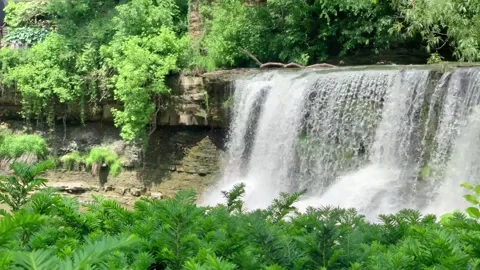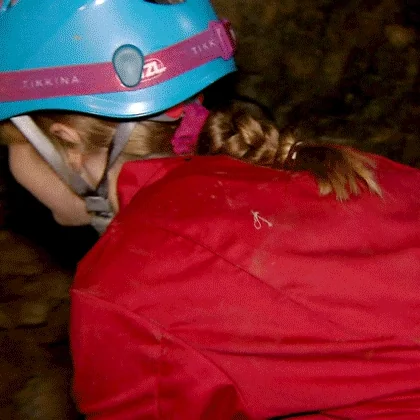Moalboal, Cebu Island, Philippines
Summary:
Moalboal is a coastal municipality located in the southwestern part of Cebu, Philippines. Known for its world-renowned diving sites, including the Sardine Run and Pescador Island, it attracts both professional divers and casual snorkelers. Its rich biodiversity, coupled with vibrant coral reefs and diverse marine life, makes it a prime spot for eco-tourism. Moalboal is also notable for its cultural heritage, local markets, and proximity to various waterfalls and hiking trails, providing a balanced mix of adventure, culture, and relaxation.
Location and Overview
Moalboal, situated approximately 105 kilometers southwest of Cebu City, is a municipality recognized for its pristine beaches, coral reefs, and a thriving marine ecosystem. Moalboal it is part of the 7th Congressional District. With an estimated population of 36,000 residents, it is a small but popular tourist destination that appeals to eco-conscious travelers and adventure enthusiasts. The primary language is Cebuano, though English is widely spoken in the area. Moalboal is a first-class municipality in Cebu, Philippines, known for its rich natural beauty and vibrant marine attractions. Moalboal is famous for Pescador Island, a popular diving destination that draws tourists from around the world.
Etymology
The etymology of “Moalboal,” a scenic municipality in Cebu, Philippines, has intrigued both locals and historians, as its name origins are tied to regional language and folklore. Moalboal’s name likely traces back to the Cebuano words “bukal-bukal” or “boral-boral,” which translate to “bubbling spring” or “boiling water.” The town is reputed to have gained its name due to the presence of natural springs that historically supplied fresh water to locals. Over time, linguistic evolution may have led “Bukal-Bukal” to become “Moalboal.”
Another interpretation of Moalboal’s name comes from a legend about a Spanish explorer. When he encountered a bubbling spring, he asked locals about it, but due to a language barrier, they mistook his question to mean the town’s name, responding with “bukal-bukal.” With regional influences, the word may have been transcribed by Spanish settlers as “Moalboal.” This misunderstanding possibly left an imprint on the area’s recorded history, shaping the town’s unique identity.
Apart from its etymology, Moalboal’s history and natural wonders, its marine life, play an essential role in its appeal, connecting its name and legacy to the vibrant natural surroundings that continue to enchant visitors. The natural landscape and cultural narratives converge to shape Moalboal’s identity, making it not only a tourist destination but also a place steeped in linguistic and historical significance.
Spanish Colonial Period
During the Spanish colonial period in the Philippines, Moalboal, like many towns in Cebu, experienced significant changes. When the Spanish arrived in Cebu in the 16th century, they brought new administrative, religious, and social structures that reshaped local life. While Moalboal was a small settlement, Spanish influence was profound, as Catholicism took root and new churches were established. Catholic missions helped integrate Moalboal into the Spanish colonial system, where land became structured according to new regulations and tax systems. The region’s natural resources, including its marine life, became valued not only by locals but also by the colonial government, setting the stage for later economic development.
Moalboal’s role in the colonial era grew as the Spanish sought to consolidate Cebu’s coastlines, which served as significant shipping routes and bases for religious missions. Despite its remote location, Moalboal’s lush surroundings and fertile land made it strategically important to Spain’s colonial efforts. The resulting cultural exchange brought Cebuano traditions and Spanish influence together, shaping Moalboal’s local customs, language, and architecture—a legacy that continues to be felt in Moalboal’s historical landmarks and celebrations.
Moalboal as a Parish
During the Spanish colonial period, Moalboal eventually became a parish, which was integral in fostering a sense of community and faith among locals. As a parish, it had a central church that served both spiritual and social roles, gathering people for worship and community events. The church also helped preserve Cebuano culture while introducing Catholic practices that became woven into local traditions. Through regular masses, baptisms, and fiestas, the parish of Moalboal reinforced religious education and became a pillar of local identity, strengthening ties to Catholicism that continue today.
The establishment of Moalboal as a parish marked a significant transformation in local culture, serving as a foundation for the town’s religious and social life. Spanish priests brought Catholic practices, integrating them with indigenous beliefs. Annual fiestas celebrating saints became central events, uniting residents through shared meals, music, and dances. The church’s influence also extended to family life, promoting sacraments like baptisms and weddings as major community events.
These gatherings reinforced not only faith but also the communal values that have endured, linking Moalboal’s past to its modern-day traditions. Let me know if you’d like details on any specific cultural influence from this period!
American Occupation
The American Occupation (1898–1946) brought significant changes to the Philippines, and Moalboal was no exception. This period, beginning with the Spanish-American War and ending post-World War II, altered Moalboal’s local governance, education, and economy.
Transition of Power and Governance
Following the Treaty of Paris in 1898, Spain ceded the Philippines to the United States, initiating American control over the islands. Initially, the U.S. used a military government to stabilize the area. As American influence grew, Moalboal, like other towns, transitioned to a civil government structure emphasizing modernization, centralization, and a new political identity. Americans introduced democratic ideals, transforming local governance by establishing civil institutions, elected councils, and mayoral offices that decentralized power. This was particularly impactful for Moalboal, as it opened the doors for greater political engagement at the local level.
Education Reform
One of the most profound changes was the establishment of a public education system. American authorities prioritized educational reform in the Philippines to promote English and instill American ideals of democracy and modernity. Moalboal’s children began attending schools where English was the medium of instruction, shifting the educational focus from religion-centered to secular subjects like science and mathematics.
The introduction of public schooling broadened opportunities for the younger population in Moalboal. Learning English gave students the means to communicate with Americans and other communities, setting a foundation for Moalboal’s growth as it opened avenues for economic development and social advancement. American teachers, known as “Thomasites,” traveled to various parts of Cebu, including Moalboal, to establish schools. Over time, education increased local literacy rates and helped cultivate a new generation of leaders.
Economic Changes and Infrastructure Development
The American Occupation stimulated economic development in Moalboal and other parts of Cebu. The establishment of new transportation networks helped integrate Moalboal more closely with Cebu City and other trading hubs, boosting trade and commerce. Improved roads, bridges, and ports enabled local farmers and fishers to more efficiently transport goods, such as coconut, rice, and seafood, which contributed to the local economy’s growth.
American influence also brought new agricultural techniques that helped Moalboal’s farmers improve productivity. For instance, the Americans introduced crop rotation and more advanced farming tools, contributing to higher agricultural yields. These changes brought more economic stability to families, and Moalboal experienced gradual economic growth as a result.
Influence of Religion and Cultural Shifts
While the Spanish had solidified Catholicism in Moalboal, the American period allowed for more religious freedom, introducing Protestantism to the area. American missionaries arrived in the Philippines and sought to expand their influence, leading to the establishment of Protestant churches and institutions. However, Catholicism remained dominant in Moalboal, and local customs around festivals, family gatherings, and religious events continued to reflect this influence.
American cultural values, such as individualism, democracy, and freedom, gradually permeated the lives of Moalboal residents. Community gatherings began to incorporate American-style celebrations, such as Independence Day, which became a significant event. Moalboal also saw changes in local lifestyles, as the influx of American goods introduced modern conveniences, including consumer goods, clothing, and recreational activities that influenced daily life.
World War II and Japanese Occupation
The American Occupation of Moalboal took a dramatic turn during World War II when the Japanese forces invaded the Philippines in 1942. Moalboal residents endured hardships under Japanese occupation, as local resources were commandeered, and many were forced into hiding or resistance. Moalboal’s guerilla fighters played a role in Cebu’s larger resistance movement, conducting covert operations and relaying information to American allies. Life became difficult under Japanese rule, with food shortages and restricted movement for Moalboal’s residents.
American forces, along with Filipino guerilla fighters, eventually succeeded in liberating Cebu, including Moalboal, in 1945. The liberation period was marked by intense battles and hardship, but the end of the Japanese occupation reignited Moalboal’s spirit of resilience and ushered in a period of rebuilding.
Post-Liberation and Philippine Independence
After World War II, the Philippines, including Moalboal, returned briefly to American administration. During this time, efforts focused on reconstructing damaged infrastructure and rebuilding local economies disrupted by the war. The post-war period brought hope as Moalboal residents participated in new governance and development initiatives, preparing for the independence that was granted on July 4, 1946.
Long-Lasting Impacts on Moalboal
The American period left a profound legacy in Moalboal, influencing its education, governance, economy, and culture. English proficiency, democratic ideals, and a modernized educational system laid the groundwork for a more interconnected and progressive Moalboal. The development of infrastructure, political reforms, and social institutions during this period fostered a more resilient community, well-prepared to navigate the challenges of independence.
Today, Moalboal’s ties to the American period remain visible in its democratic processes, bilingual education, and cultural influences, making it a town with a unique blend of local tradition and modern advancements.
Geography
Climate
Moalboal, Cebu, has a tropical climate with distinct wet and dry seasons, which is typical of the larger Cebu Island. Located near the equator, Moalboal experiences relatively warm temperatures year-round, with an average annual temperature between 27°C and 30°C (80°F – 86°F). Humidity is generally high, especially from May to October, during the wet season.
Seasons in Moalboal
- Dry Season (November to April): This season is characterized by sunny days, moderate humidity, and lower rainfall. March and April are the driest months, often with very little precipitation. These conditions are ideal for beach activities, diving, and snorkeling, with clear waters and excellent visibility.
- Wet Season (May to October): This period sees higher rainfall, with June to September as the wettest months, often experiencing afternoon and evening showers. Typhoons can occasionally affect the area, typically peaking between August and October, though they are less common than in northern parts of the Philippines. During this time, diving and other water activities are still popular, though visibility may vary.
Temperatures
Moalboal’s coastal location moderates temperature fluctuations. While daytime highs can reach up to 33°C (91°F), nighttime temperatures tend to drop to around 23°C (73°F). The coastal breeze also helps to cool down the town, especially during the evenings.
Ocean and Winds
Moalboal’s waters remain warm, with temperatures typically ranging from 26°C to 30°C (79°F – 86°F), creating ideal conditions for year-round diving. Monsoon winds affect the climate, especially the Amihan (Northeast Monsoon) from November to February, which brings cooler winds, and the Habagat (Southwest Monsoon) from June to October, which brings warm, moist air and increased rainfall.
Overall, Moalboal’s climate supports a thriving tourism industry by providing a warm, tropical setting with ideal weather for marine and outdoor activities most of the year.
| Climate data for Moalboal, Cebu | |||||||||||||
|---|---|---|---|---|---|---|---|---|---|---|---|---|---|
| Month | Jan | Feb | Mar | Apr | May | Jun | Jul | Aug | Sep | Oct | Nov | Dec | Year |
| Mean daily maximum °C (°F) | 29 (84) |
30 (86) |
31 (88) |
32 (90) |
31 (88) |
30 (86) |
30 (86) |
30 (86) |
30 (86) |
29 (84) |
29 (84) |
29 (84) |
30 (86) |
| Mean daily minimum °C (°F) | 22 (72) |
22 (72) |
23 (73) |
24 (75) |
25 (77) |
25 (77) |
24 (75) |
24 (75) |
24 (75) |
24 (75) |
24 (75) |
23 (73) |
24 (75) |
| Average precipitation mm (inches) | 42 (1.7) |
34 (1.3) |
40 (1.6) |
61 (2.4) |
124 (4.9) |
188 (7.4) |
190 (7.5) |
191 (7.5) |
189 (7.4) |
186 (7.3) |
124 (4.9) |
73 (2.9) |
1,442 (56.8) |
| Average rainy days | 10.0 | 8.5 | 9.5 | 12.8 | 22.3 | 26.8 | 28.4 | 27.9 | 27.3 | 27.6 | 20.5 | 13.1 | 234.7 |
| Source: Meteoblue (modeled/calculated data, not measured locally) | |||||||||||||
Economy of Moalboal, Cebu
Moalboal, possesses an economy primarily driven by tourism, fishing, and agriculture. While traditionally reliant on fishing and farming, the rapid growth of tourism in recent decades has significantly reshaped the local economic landscape.
Tourism:
The tourism sector is arguably the most influential economic driver in Moalboal. The municipality’s beautiful beaches, particularly Panagsama Beach, coupled with world-renowned diving and snorkeling sites like Pescador Island and the Sardine Run, attract a large number of both domestic and international tourists. This influx of visitors has fueled the growth of various supporting industries:
-
Hospitality: A wide range of accommodations, from budget-friendly hostels and guesthouses to upscale resorts, cater to diverse tourist demographics. This sector provides significant employment opportunities for locals.
-
Food and Beverage: Restaurants, bars, and cafes have proliferated in Moalboal, offering a mix of local and international cuisine. This sector benefits from both tourist spending and the increasing demand from a growing local population connected to the tourism industry.
-
Dive Operations: Moalboal is a diving hotspot, and numerous dive shops offer PADI certifications, equipment rentals, and guided dives. This specialized industry is directly linked to the area’s natural resources and contributes substantially to the local economy.
-
Transportation and Tour Services: Tricycles, motorbike rentals, and tour operators facilitate tourist movement and access to various attractions within and around Moalboal. This sector provides income for local drivers and guides.
-
Retail: Souvenir shops, local markets, and small businesses selling handcrafted items and local products thrive on tourist spending, contributing to the circulation of money within the local economy.
Fishing:
Despite the rise of tourism, fishing remains an important part of Moalboal’s economy. Local fishermen continue to supply fresh seafood to local markets and restaurants, playing a vital role in food security and providing livelihoods for many families. However, the increasing pressure on marine resources due to tourism and population growth necessitates sustainable fishing practices to ensure the long-term viability of this sector. Concerns regarding overfishing and destructive fishing methods remain a challenge.
Agriculture:
Agriculture contributes to the local economy and local consumption. Small-scale farming activities, primarily focused on crops like corn, rice, and vegetables, provide sustenance and income for a portion of the population. However, limited arable land and increasing competition from imported agricultural products pose challenges to the growth of this sector.
Challenges and Future Outlook:
The economy of Moalboal faces several challenges, including:
-
Environmental Sustainability: Balancing economic growth with environmental protection is crucial. The influx of tourists puts pressure on natural resources, including coral reefs and marine life. Sustainable tourism practices and responsible waste management are essential for the long-term health of the local economy.
-
Infrastructure Development: Improving infrastructure, including roads, water supply, and waste management systems, is necessary to support the growing tourism industry and improve the quality of life for residents.
-
Economic Diversification: While tourism has become the dominant economic driver, diversifying the local economy beyond tourism is important to reduce dependence on a single sector and create more resilient economic opportunities.
-
Skills Development and Education: Investing in education and skills development programs tailored to the needs of the tourism and other growing sectors is crucial for ensuring that local residents can benefit from employment opportunities and contribute to economic growth.
The future of Moalboal’s economy hinges on its ability to address these challenges while capitalizing on the opportunities presented by its natural beauty and growing tourism industry. Developing sustainable tourism practices, investing in infrastructure, and diversifying economic activities will be crucial for ensuring long-term economic prosperity and improving the quality of life for all residents.
Transportation in Moalboal, Cebu
Moalboal, a municipality in southwestern Cebu, Philippines, offers a variety of transportation options for navigating within the town and accessing surrounding areas. While the town itself is relatively compact and walkable, various modes of transport cater to different needs and distances.
Within Moalboal:
-
Walking: For shorter distances within Moalboal town proper and along Panagsama Beach, walking is the most common and convenient method. The relatively flat terrain and pedestrian-friendly streets make walking an enjoyable way to explore the area.
-
Tricycles (Motorized Three-Wheeled Vehicles): Tricycles are ubiquitous in Moalboal and serve as the primary mode of public transport within the town and its immediate vicinity. They are readily available and offer a relatively inexpensive way to travel short to medium distances. Negotiating fares beforehand is customary.
-
Motorbikes (Habal-habal): For more remote areas or for a more personalized travel experience, motorbike taxis, known as habal-habal, are available. These are especially useful for reaching destinations with challenging terrain or limited road access. As with tricycles, agreeing on a fare before the journey is recommended. Safety considerations, such as wearing a helmet, are crucial when using habal-habal.
-
Bicycle Rentals: Several businesses in Moalboal offer bicycle rentals, providing a leisurely and eco-friendly way to explore the town and surrounding countryside. This option is particularly popular for exploring the quieter roads and coastal paths.
To and From Moalboal:
-
Buses: Regular bus services connect Moalboal to Cebu City’s South Bus Terminal. This is the most common and affordable way for many to travel to and from Moalboal. The journey takes approximately 3-4 hours, depending on traffic conditions.
-
Vans (V-Hire): Vans, also known as V-Hire, provide a slightly faster and more comfortable option than buses, operating on fixed routes between Moalboal and Cebu City. These vans typically depart when full, offering a more direct service.
-
Private Cars and Taxis: Private car rentals and taxis are available for a more comfortable and personalized transfer to and from Moalboal. This option provides greater flexibility in terms of scheduling and luggage capacity. Pre-booking is often advisable, particularly during peak season.
-
Airport Transfers: Many resorts and hotels in Moalboal offer airport transfer services, providing a seamless and convenient way to travel directly from Mactan-Cebu International Airport (MCIA) to your accommodation. This is typically a more expensive option but offers convenience and eliminates the need for multiple transfers.
Future Developments:
As Moalboal continues to grow as a tourist destination, improvements and expansions to its transportation infrastructure are anticipated. These may include:
-
Road improvements: Upgrades to existing roads and the development of new routes to improve accessibility to various attractions and alleviate traffic congestion.
-
Public transportation enhancements: Potential improvements to bus and van services, including increased frequency and improved comfort.
-
Sustainable transportation options: Exploring and promoting more sustainable transportation options, such as electric vehicles and improved cycling infrastructure, to reduce the environmental impact of tourism.
Considerations for Travelers:
-
Traffic: Traffic congestion can be an issue during peak season, especially on the main roads leading to and from Moalboal. Planning your travel times accordingly is recommended.
-
Negotiating Fares: When using tricycles or habal-habal, it’s essential to negotiate the fare before commencing your journey to avoid misunderstandings.
-
Safety: Safety should always be a priority. When using motorbikes, ensure you wear a helmet. When traveling by bus or van, be mindful of your belongings.
-
Accessibility: While efforts are being made to improve accessibility, some areas within Moalboal may present challenges for individuals with mobility limitations. Inquiring about accessibility options beforehand is advisable.
By understanding the various transportation options available, travelers can efficiently and comfortably navigate Moalboal and experience all that this vibrant coastal town has to offer.
Lanuages
In Moalboal, Cebu, the primary language spoken is Cebuano. As the main dialect in Cebu and surrounding areas, Cebuano serves as the everyday communication language for most locals. Cebuano’s use is widespread in both social and business interactions, giving visitors a chance to experience the local linguistic culture. While Cebuano is the native language, Tagalog and English are also widely understood and spoken. English is especially prevalent in the tourism sector, where many locals use it to communicate with foreign visitors.
Cebuano Language Features
Cebuano is an Austronesian language with a unique vocabulary and grammar structure. Like many Philippine languages, Cebuano follows a verb-subject-object order. The language also contains loanwords from Spanish, a result of centuries-long colonial influence. This influence remains present in daily expressions, food names, numbers, and even religious terms. Cebuano also incorporates a tonal aspect, which can affect the meaning of words based on pronunciation.
English and Tagalog Influence
The influence of English and Tagalog in Moalboal comes from educational systems and media exposure. English is used in schools, government functions, and media, making it accessible to many in Moalboal. Tagalog, as the national language, is also commonly understood, particularly through television, music, and national events. Bilingualism or even trilingualism is common, as locals can switch between Cebuano, English, and Tagalog depending on context, with English and Tagalog used more in professional or tourist settings.
Language in the Tourism Sector
In Moalboal’s tourism-driven economy, English proficiency is especially important. Tourist guides, dive instructors, and hotel staff often use English when interacting with international guests, ensuring smooth communication and high-quality service. Some locals have also picked up basic words and phrases from other languages, especially from frequent European visitors, which further reflects the multilingual and adaptive nature of Moalboal’s community.
Linguistic Culture and Identity
For locals in Moalboal, Cebuano is not just a means of communication but also an essential aspect of cultural identity. Expressions, folk tales, and even religious ceremonies are deeply rooted in Cebuano, fostering a sense of community among residents. The language is also significant during community events and traditional gatherings, where Cebuano songs, chants, and poetry play a vital role.
Language Preservation Efforts
Efforts to preserve Cebuano continue through local media, schools, and cultural initiatives. In educational settings, Cebuano is often used for early instruction, helping children connect deeply with their heritage before transitioning to English or Tagalog for later studies. Local government programs and media outlets are working to preserve Cebuano by creating content in the language, which strengthens cultural ties and aids its continued relevance among the younger population.
Dialectal Variations
Cebuano in Moalboal may include dialectal variations or localized expressions that differ slightly from Cebuano spoken in other regions. These nuances, often unique to the municipality or its barangays, add layers of diversity to Cebuano itself, reflecting the adaptability and uniqueness of Moalboal’s linguistic culture.
Tourism and Attractions
Moalboal’s main attractions revolve around its marine biodiversity. Panagsama Beach, famous for the Sardine Run, attracts divers worldwide who come to witness millions of sardines swimming in synchronized patterns just meters from the shore. Pescador Island, another significant site, offers vibrant coral gardens and diverse marine life, ideal for snorkeling and diving enthusiasts.
The White Beach (Basdaku), located further up the coastline, offers a quieter alternative to Panagsama, with soft white sands and a more tranquil beach atmosphere. Moalboal also serves as a gateway to nearby attractions, such as Kawasan Falls, known for canyoneering adventures in the neighboring town of Badian.
Culture and Community Life
Moalboal’s community life is vibrant and rooted in Cebuano culture. The town hosts local markets where travelers can experience local produce, seafood, and handicrafts. The locals’ warm hospitality enhances the cultural experience, as visitors engage in local festivals, markets, and traditional dining options. Moalboal’s rich heritage is celebrated annually through various fiestas and events, showcasing Cebuano music, dance, and culinary traditions.
Adventure Activities
Apart from diving, Moalboal is ideal for other adventure sports such as canyoneering, kayaking, and hiking. The nearby Badian hills offer scenic hiking trails, while the coastlines are ideal for kayaking. Diving and snorkeling are the main attractions, especially with Moalboal’s underwater biodiversity, including green sea turtles, reef sharks, and various tropical fish species. Environmental conservation efforts are active in Moalboal, with eco-conscious tourism practices encouraged among visitors and locals.
Environmental Challenges and Preservation Efforts
Moalboal faces environmental pressures due to increased tourism. Efforts are underway to mitigate these impacts, including community-led coral reef conservation initiatives and sustainable tourism campaigns aimed at preserving marine biodiversity. There are regular coastal cleanups, and some diving operations have adopted environmentally friendly practices to protect local ecosystems.
Transportation
Moalboal is accessible via bus or van from Cebu City, with travel times averaging 3 hours. Within Moalboal, motorbikes and tricycles are the primary modes of transport, though walking is common in tourist areas. There are motorbike rentals available for travelers wishing to explore the region independently.
Accommodation and Dining
Moalboal offers diverse accommodation options, from budget hostels to luxury dive resorts. Popular accommodations include Panagsama Beach resorts, where many dive centers are based, and Basdaku Beach for those seeking a quieter beachside retreat. Dining options in Moalboal cater to both local and international tastes, with seafood, traditional Filipino dishes, and western cuisine available in various establishments around town.
Pros and Cons of Visiting Moalboal
Pros:
- Marine biodiversity: Rich underwater ecosystems with accessible snorkeling and diving.
- Affordability: Budget-friendly options for accommodations and activities.
- Cultural experiences: Local markets, fiestas, and interactions with the Cebuano community.
- Proximity to nature: Waterfalls, canyoneering, and hiking options.
Cons:
- Environmental impact: Overcrowding and waste management issues due to tourism.
- Limited infrastructure: Few options for public transport and fewer high-end amenities.
- Weather dependency: Many activities rely on fair weather conditions.







